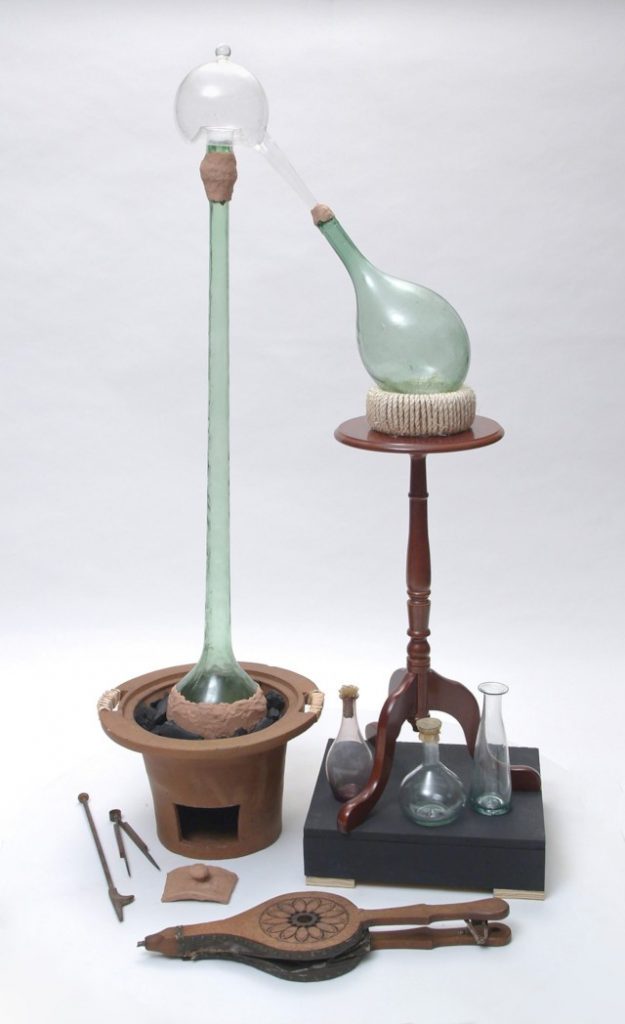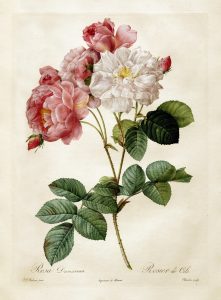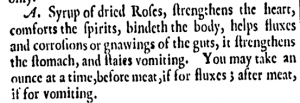By Amie Bolissian-McRae
The rosewater used in our sweet festive snow was typically made from Rosa gallica L. or Rosa damascena Mill. (the Damask rose).
Rosewater is something that, today, people in England often associate with Middle Eastern food. My own Armenian grandmother made her unsurpassable baklava with generous teaspoons of rosewater and orange-water. What is less well known is quite how popular a culinary ingredient rosewater was in 16th to 18th century recipes. It appeared in almost all desserts and many savoury dishes. As an example, the 1597 booke of cookerie suggested rosewater, cinnamon, ginger, cloves, and mace as the flavourings for its savoury ‘Tart to provoke courage in either man or woman’.1 (The main ingredients were wine, burdock, eight egg yolks, and ‘the braines of thrée or fower cocke sparrowes’, It remains unclear which was thought the active ingredient to promote bravery.) Rosewater was a ubiquitous ingredient found in merchants’ and apothecary shops and it wasn’t too tricky to make. In fact, I found very few actual recipes for rosewater in the printed and manuscript collections, which is likely down to how common the knowledge was for making flower waters. Two types of rosewater were likely. One was made by merely steeping the parts of the flower (petals, sepals, buds) in water, sometimes with a little alcohol, and the other was distilled. This would have been done using an alembic or ‘Lembic’ as they often called it. The recipe below, using a ‘stillitory’ is one of the more complex methods for making rosewater from the disturbingly titled 1651 published work, Natura Extenturata: Nature Unbowelled:
‘To make Rosewater for Damask-water
Take red Roses and pick them from the buds, then take Lavender speck, Marjoram, and Basul, the leaves of each two handfuls, then take five or seven leaves of your Roses, and lay on them a little quantitie of Cyvet, then take Damask powder and straw between every range, then distill them in your Stillitory with a soft fire in/s? anywise.’2

We can see examples of their health ‘virtues’ below in these excerpts from the 1653 Royal College of Physicians’ Pharmacopoeia. Syrup of roses is even suggested for taking before or after ‘meat’ (the term ‘meat’ at this time signified all food), in order to avoid digestive problems.
Exactly what we could all do with after an enormous Christmas meal!
- A booke of cookerie, 1597, 33-4.
- Philiatros, Natura Extenturata, 1655, 378.




